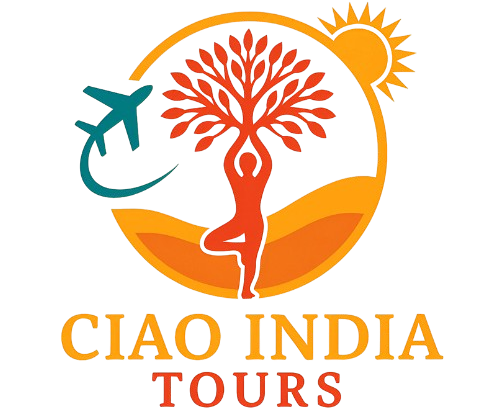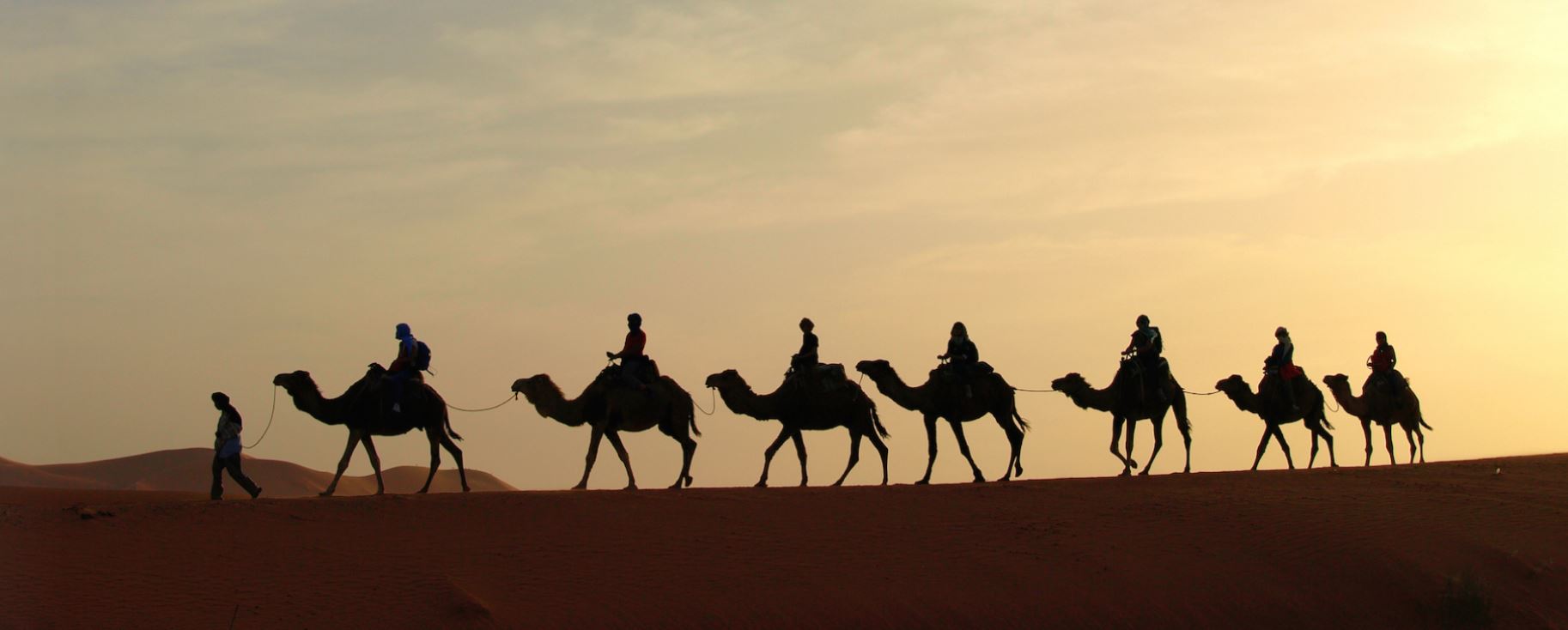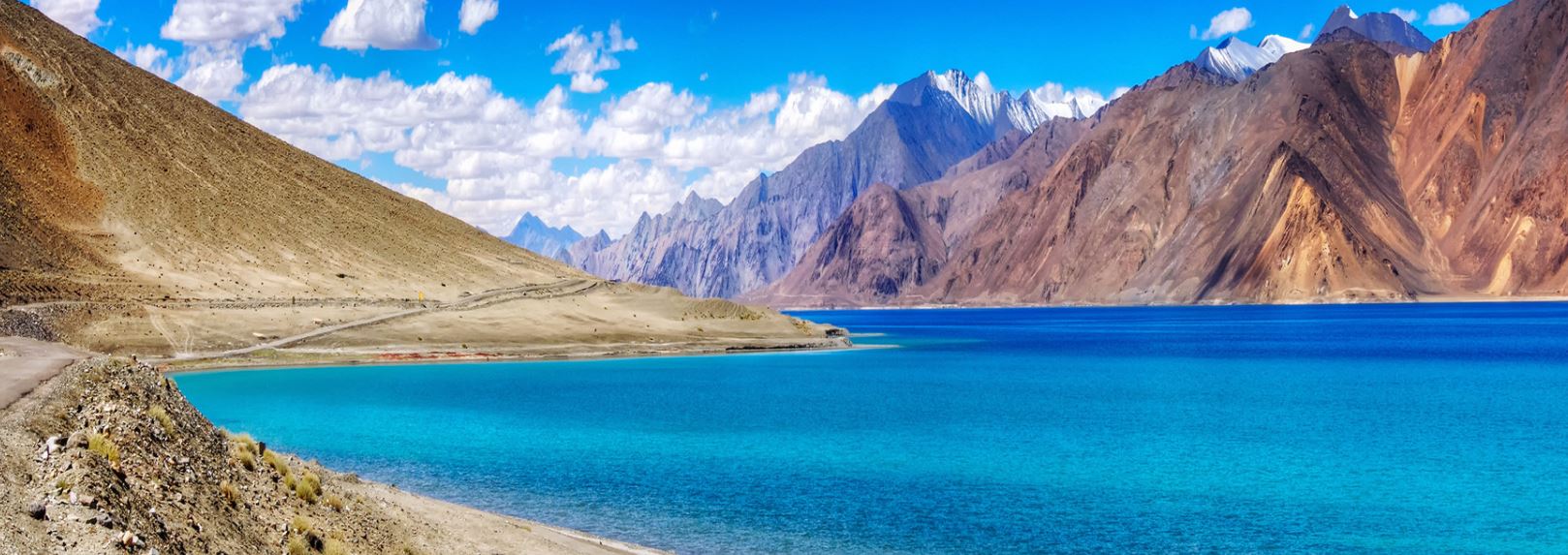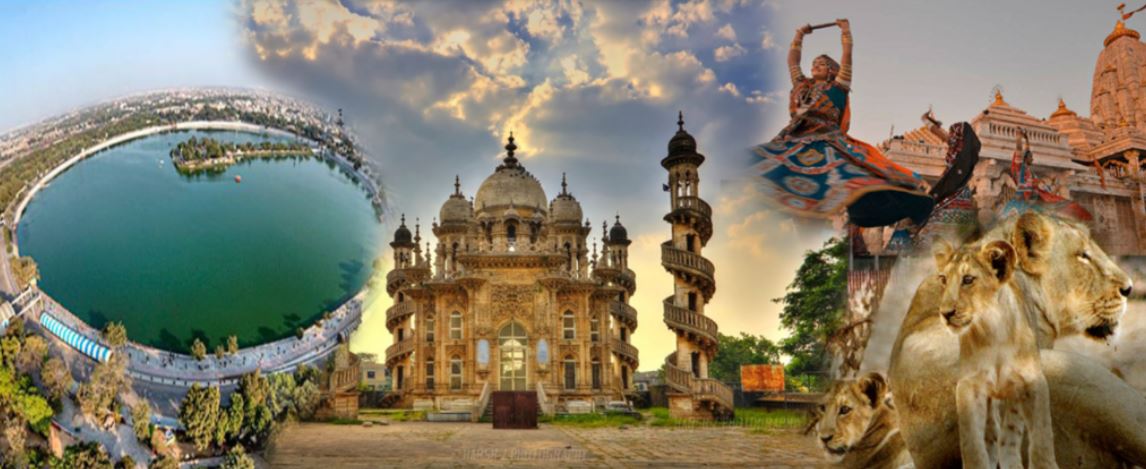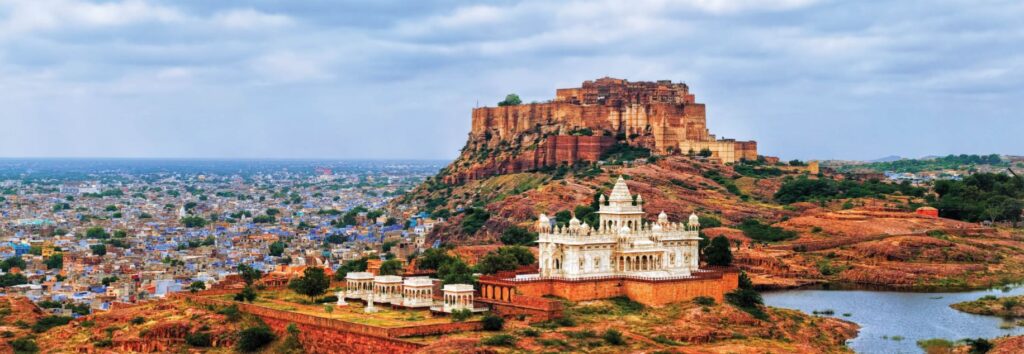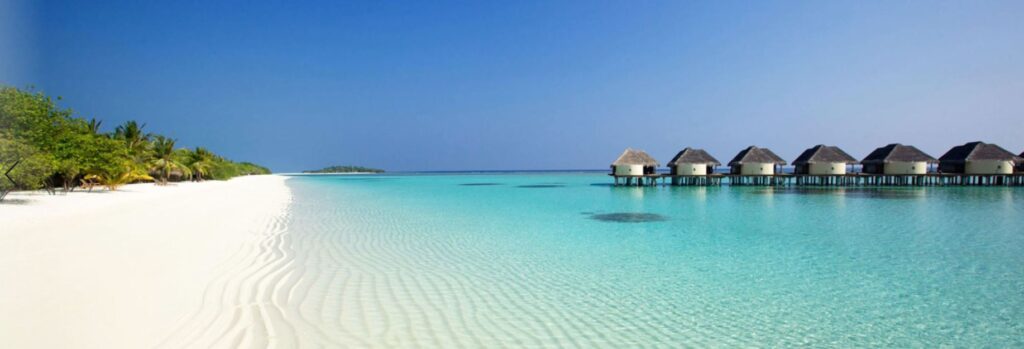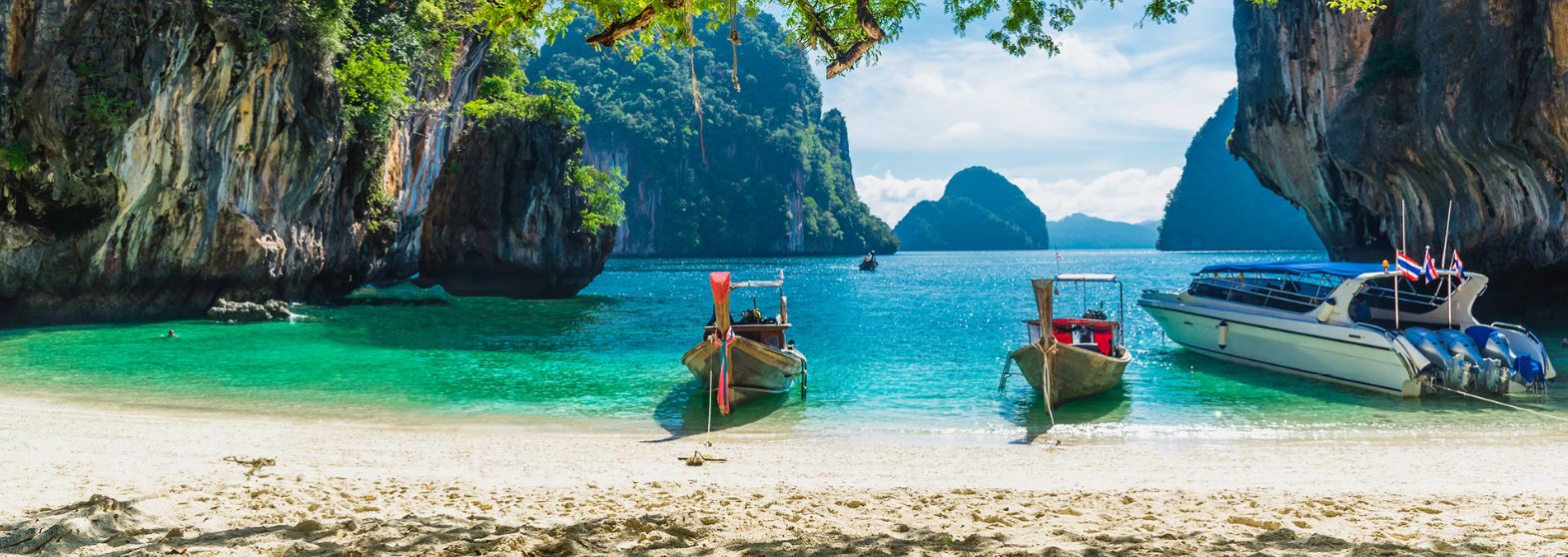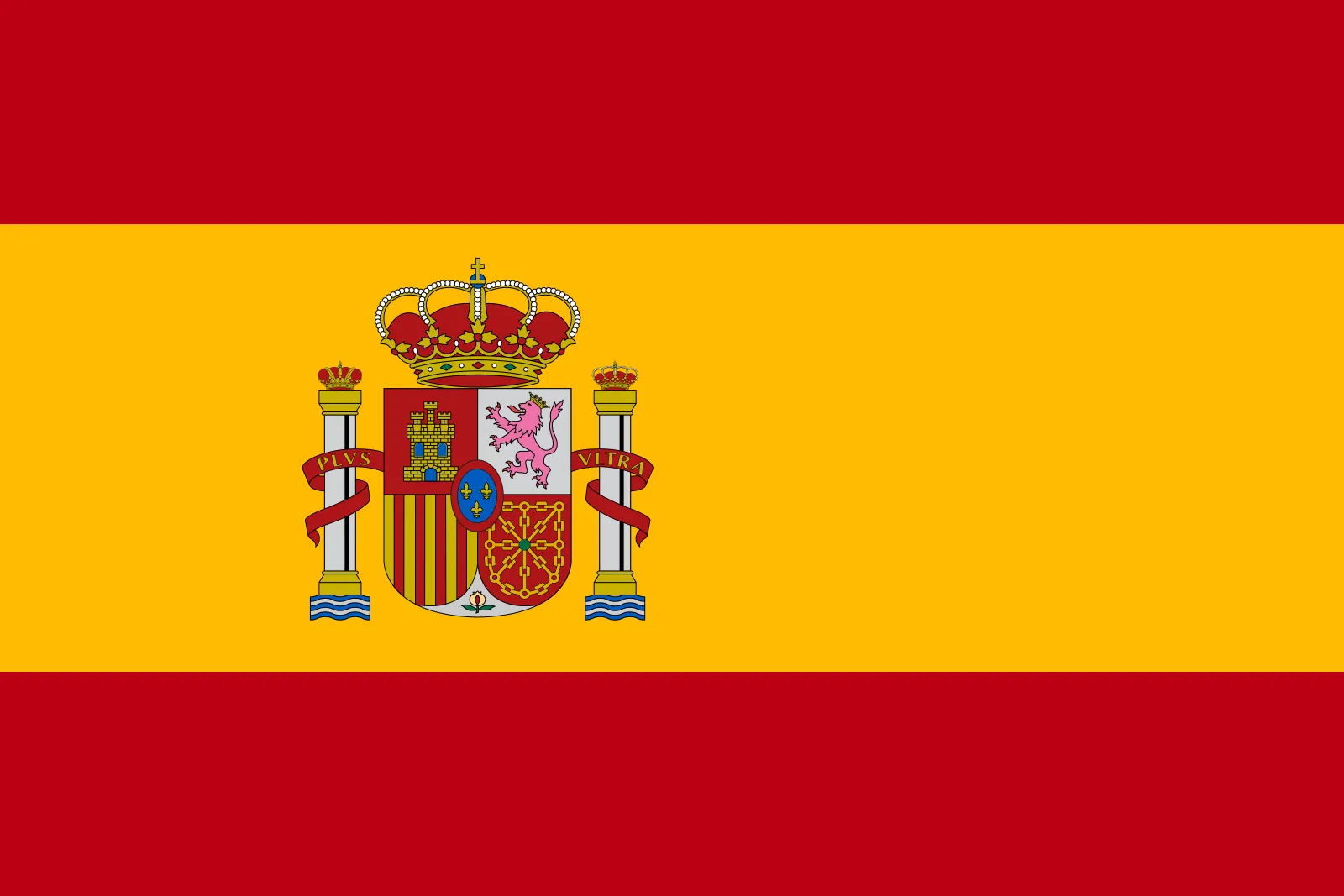All our tours are 100% customizable
Golden Triangle with Varanasi – 08 nights/09 days
Price to be reconfirmed – 530 Euro/pp minimum -02 persons
Delhi-Jaipur-Abhaneri-Fatehpur Sikri-Agra-Varanasi-Delhi
Day 1 - Arrival in Delhi
Arrival at New Delhi International Airport.
After completing immigration procedures and collecting your luggage, our representative will be waiting for you outside the Terminal.
Check-in at 2:00 PM / Check out at 12:00 PM.
Jama Masjid :- the largest and most famous mosque in India, stands not far from the Red Fort and Chandni Chowk, the oldest and busiest market in Old Delhi. Built by Shah Jahan in the 17th century, Jama Masjid is among the busiest in Delhi for pilgrims and tourists.
Old Delhi :- The characteristic atmosphere of Delhi's markets can be best savoured in Chandni Chowk and in general in the narrow streets that are teeming at all hours with vendors and goods of all kinds. According to legend, just like Jama Masjid and the Red Fort, the Chandni Chowk market was also established during the reign of Mughal Emperor Shah Jahan.
Red Fort (photo stop): - Red Fort is one of the works commissioned by the Mughal Emperor Shah Jahan in the 17th century, its construction took about 9 years of work and cost 10 million rupees.
Raj Ghat :- Raj Ghat memorial marking the cremation site of Mahatma Gandhi, the man known as the Father of the Nation and a symbol of world pacifism.
Laxmi Narayan Temple: - Lord Narayan is with his consort Goddess Laxmi (the goddess of prosperity), hence the temple is called Laxminarayan Temple.
India Gate: - In the center of New Delhi stands the 42 m high India Gate, an "Arc de Triomphe" like arch in the middle of a crossroads. Almost similar to its French counterpart, it commemorates the 70,000 Indian soldiers who lost their lives fighting for the British Army during World War I.
President’s Hous, old and new Parliament Building (Photo stop).
Gurudwara Bangla Sahib: - is one of the most important Sikh gurdwaras, or Sikh house of worship, associated with the eighth Guru, Guru Har Krishan, and is also known for the pool within its compound, known as “Sarovar”.
Overnight stay in Delhi.
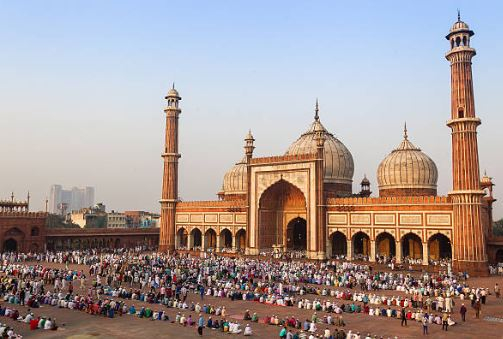
Day 2 - Delhi-Jaipur (281 Km, 5 Hours)
After breakfast, depart for Jaipur.
Birla mandir :- Birla Temple, Jaipur At the foot of the Moti Dungri fort is the Birla Temple. This temple is one of the most beautiful attractions of Jaipur. The Birla Temple of Jaipur is beautiful when it is illuminated at night.
Local Market: - Jaipur which is famous for jewellery and clothes is most visited by people who love both. There are many famous markets in Jaipur which sell precious stones, gems, semi-precious stones and jewellery.
Overnight stay in Jaipur.

Day 3 - Jaipur
After breakfast the day begins.
Amer Fort: - Amer is a city with an area of 4 square kilometres (1.5 sq mi) located 11 kilometres (6.8 mi) from Jaipur, the capital of Rajasthan. Situated on top of a hill, it is the major tourist attraction in the Jaipur area. The city of Amer was originally built by Meenas, and was later ruled by Raja Man Singh I (21 December 1550 – 6 July 1614).
Jal Mahal (Outdoor Photo Stop): - Jal Mahal is a work of art located in the middle of Man Sagar Lake, the palace will give you the illusion of almost floating on top of the lake and that is the moment this view will take your breath away.
City Palace: - Jaipur, which includes the Chandra Mahal and Mubarak Mahal palaces and other buildings, is a palace complex in Jaipur, the capital of the state of Rajasthan, India. It was the seat of the Maharaja of Jaipur, the head of the Kachwaha Rajput clan. The Chandra Mahal palace now houses a museum, but most of it is still a royal residence.
Jantar Manta r :- is an equinoctial sundial, consisting of a gigantic triangular gnomon with the hypotenuse parallel to the Earth's axis. On the sides of the gnomon there is a quadrant of a circle, parallel to the plane of the equator. The instrument is used to measure the time of day, correct to half a second and the declination of the Sun and other celestial bodies.
Hawa Mahal (Photo stop): - Hawa Mahal (English translation: “Palace of the Winds” or “Palace of the Breeze”) is a palace in Jaipur, India, hence its name because it was essentially a high screen wall built so that the women of the royal family could observe street festivals.
Galtaji Temple: - The temple is also known as the monkey temple as there are many monkeys. The temple is dedicated to Lord Hanumana, established in 16th century by Diwan Rao Kriparam who was the advisor of King Sawai Jai Singh II.
Overnight stay in Jaipur.
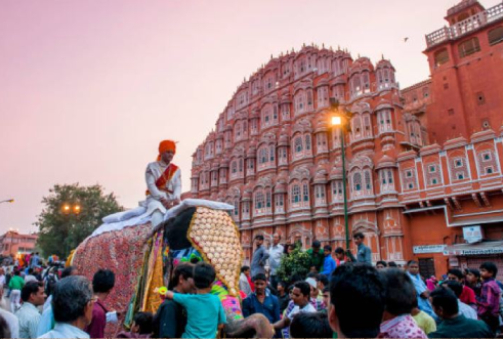
Day 4 - Jaipur-Abhaneri-Fatehpur Sikri-Agra (241 km 4 hours 30 minutes)
After breakfast, depart for Agra.
Along the way we will visit the very famous Chand Baori located in the small village of Abhaneri. Abhaneri: - is famous for the 'bhaori', wells dug by the natives to collect rainwater. These structures, depending on the time of year, are used as places to cool off or as water tanks. Chand Baori is the most popular of the wells in the region, and is one of the deepest and largest in India.
Fatehpur Sikri: - Built by the Mughal Emperor Akbar in the mid-16th century, Fatehpur Sikri (meaning City of Victory) served as the capital of his empire for 15 years. Built in Indo-Islamic style, Sikri is a red sandstone complex filled with palaces, mosques, temples and other structures.
Overnight stay in Agra.

Day 5 Agra-Varanasi (By Night Train)
After breakfast the day begins.
Taj Mahal: - is one of the seven wonders of the world and a must-see place in India. It is the living specimen of the romantic life of Shah Jahan and his beautiful wife Mumtaz Mahal. The construction of this beautiful monument was completed in 1653 A.D. The Mughal King Sha Jahan built it as a final resting place for Queen Mumtaz.
Agra Fort: - Agra Fort located on the steep banks of the Yamuna River, this moon-shaped fort was commissioned by Akbar, one of the greatest Mughal emperors, in 1565. Surrounded by mighty walls, the complex has numerous palaces, gardens, halls and other structures of historical sites within the fort.
Itimad ud daula:- Built by Nur Jahan, in memory of his father Ghias-ud-Din Beg, who was given the title of 'Itimad-ud-Daulah' meaning 'Pillar of Government'. It is the first tomb to be built in white marble instead of red sandstone. It marks the departure from the red sandstone buildings of Mughal architecture.
Mehtab Bagh:- This beautiful garden is located on the western bank of the Yamuna River and is in perfect alignment with the Taj Mahal gardens located across the river. Spread over 300 sq. m., Mehtab Bagh has been the site of several intriguing excavations.
Sadar Bazaar: - Situated near Agra Cantonment railway station, Sadar Bazaar is the most famous place in Agra that attracts a good number of tourists. If you are looking for products like handicrafts, garments, some delicious sweets, leather products then this place can be the best option for you from where you can find the best possible deals.
Departure for Varanasi.
Transfer to Agra train station as per train schedule for Varanasi.
Overnight stay in Varanasi.
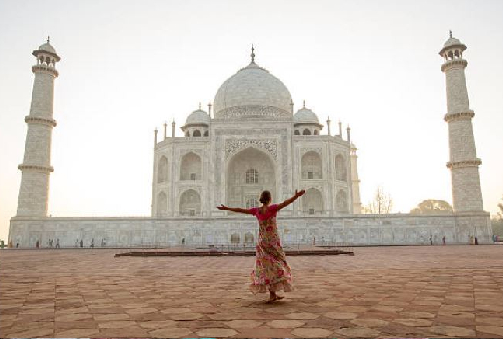
Day 6 - Varanasi
Arrival in Varanasi and transfer to the hotel
After breakfast, time to relax
In the afternoon visit Sarnath and city tour.
Sarnath :- Sarnath, one of the most sacred Buddhist sites in the world, is famous for being the place where Gautama Buddha delivered his first sermon. From then until the 12th century AD
Archaeological Park: - The colossal ruins are located in the same complex as Dhamek Stupa. The excavation sites of Sarnath have impressive collections of monasteries, stupas, temples, inscriptions, sculptures and other antiquities dating from the 3rd century BC to the 12th century AD. These sites are now maintained by the Archaeological Survey of India.
Archaeological Museum: - Sarnath is the oldest archaeological survey site museum in India. In order to preserve and display the antiquities found from the site during excavations.
Wat Thai Sarnath Temple: - Wat Thai Sarnath Temple was built by Thai dignitaries in the year 1933. Adorned with well-kept gardens, the Thai temple is built in the Thai architectural style and is maintained by Thai Buddhist monks. Just before the entrance of the main temple, there are images of Laughing Buddha.
Return to Varanasi.
Visit Godowlia Market: - Godowlia has narrow streets lined on both sides with squat buildings and small shops selling everything from ordinary everyday household items to hardware, fine silk and brocade fabrics, shawls, zari work, ready-made garments, shoes, beads and bangles and other trinkets. You can even buy and sell stocks and avail other financial services from one of the institutions dotted around the place.
Evening prayer called Ganga Aarti: - It is an organized activity that begins with lighting the tiered brass ceremonial lamps and a well-synchronized and rhythmic chanting of the holy mantras. While some of the priests blow the conch shells to sanctify the atmosphere, other priests start waving the incense sticks to worship Mother Ganga.
Overnight stay in Varanasi.
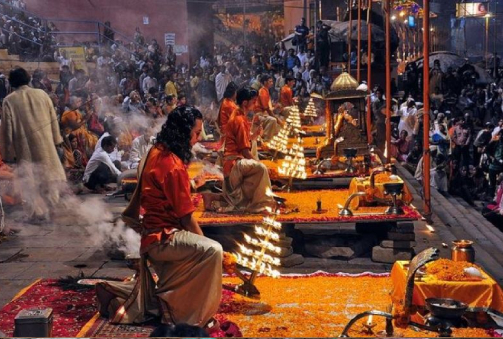
Day 7 - Varanasi-Delhi (By flight)
This day you need to get up early, at 05:00 hrs. in the morning to take the boat ride. The best part of enjoying the Ganges river is taking a boat ride on the river. The Ganges river flows through the city and there are numerous ghats that connect the river to the mainland. The day of the people of Varanasi who live near the Ganges river starts with the holy dip in the Ganges.
Manikarnika Ghat :- One of the most famous, sacred and ancient ghats of Varanasi, Manikarnika is the main burning ghat and one of the most auspicious places for a Hindu to be cremated. The bodies are carried to the ghat by the bamboo stretcher covered with red cloth which is handled by the dom.
Kashi Vishwanath Temple (Photo Stop Outside) :- Kashi Vishwanath Temple is one of the most famous temples in Varanasi, also known as the Golden Temple dedicated to Lord Shiva. It was built in the year 1780 by the Maratha monarch, Maharani Ahilyabai Holkar of Indore. This makes Varanasi a tourist spot due to its great religious importance for Hindus.
Walking around Vishwanath Temple or Golden Temple area is always a unique experience as it has always been the most important cultural and financial area of Varanasi. A visit to the finest temple artwork in the entire city at Gautameshwar Mahadev, Golden Temple: The most important Shiva temple in the entire India, historic mosques, ancient and hidden lanes, bazaar market in Varanasi, architecture of ancient building of Varanasi along with the largest crematorium on the planet located at Manikarnika ghat will give you a unique and unforgettable walking experience.
We return to the hotel for breakfast.
Free time to discover the Ghats on your own.
Depart for Varanasi airport as per flight schedule for Delhi.
Upon arrival, transfer to the hotel.
Overnight stay in Delhi.
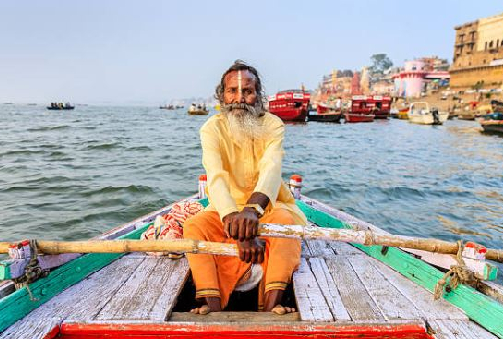
Day 8 - Delhi-Next Destination
Transfer to Delhi airport.
Ciao India Tours wishes you a pleasant journey.
Inclusions:
- 07 nights’ accommodation in 3 star/heritage hotels with breakfast, including all existing taxes.
- All transfers from the airport/station to the hotel and vice versa as per program.
- Meet and assist upon arrival/departure by our representative at the airport.
- All transfers as per program with large air-conditioned car.
- The train from Agra to Varanasi.
- The flight from Varanasi to Delhi.
- Wi-Fi in the car.
- One bottle of water per person per day.
- All taxes included.
- Toll, Parking, Fuel, Driver's accommodation.
Exclusions:
- Visa, International flight, Health insurance, cancellation/change of flights, trains, Alcoholic beverages, Lunch and dinner, Tips, Tickets for monuments and activities, personal expenses, Camera etc.
- Everything that is not included in the inclusions.
